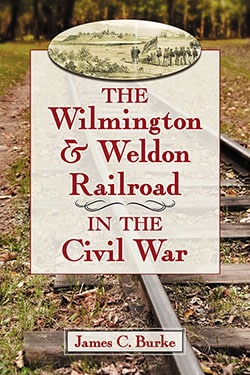The Wilmington & Weldon Railroad in the Civil War
$39.95
In stock
About the Book
In its early years, the Wilmington & Raleigh Rail Road Company survived multiple threats to its existence. Under its new corporate name, the Wilmington & Weldon Railroad Company would soon be put to the ultimate test, the Civil War. From mobilization to the last effort to supply Lee’s Army of Northern Virginia, the company would endure the wearing out of its equipment and rails; the capriciousness and bureaucracy of the Confederate government; sabotage attempts; the gruesome death of its president; a yellow fever epidemic; Union raids on its facilities and bridges; runaway inflation in Confederate economy; the fall of Wilmington; its bisection by advancing Union forces; and, finally, the unnecessary destruction of locomotives, cars, track, and bridges by retreating Confederate troops. The railroad, unlike the Confederacy, survived, and would eventually transform itself a powerful regional economic force, adapting to the challenges of the New South.
About the Author(s)
Bibliographic Details
James C. Burke
Format: softcover (6 x 9)
Pages: 272
Bibliographic Info: 41 photos, 2 maps, 5 graphs, charts, appendices, notes, bibliography, index
Copyright Date: 2013
pISBN: 978-0-7864-7154-6
eISBN: 978-0-7864-9306-7
Imprint: McFarland
Table of Contents
Acknowledgments ix
Preface 1
Introduction 7
I. The Railroads of Wilmington, Before and After the War 13
II. The Events of 1860–1861 35
III. The Freight of War 77
IV. The Enemy, Seen and Unseen 98
V. Demanding the Impossible 134
VI. The Aftermath 146
VII. Rebuilding 158
Appendix A: Locomotives and Inventory of the Company Shops 169
Appendix B: Railroad Employees Living in Wilmington, 1865–1871 176
Appendix C: Freight Shipments for the Confederate Government 204
Chapter Notes 225
Bibliography 250
Index 257
Book Reviews & Awards
“Burke describes how the railroad economy changed the urban forms of Wilmington, creating distinct industrial, commercial, and residential districts”—Reference & Research Book News.





